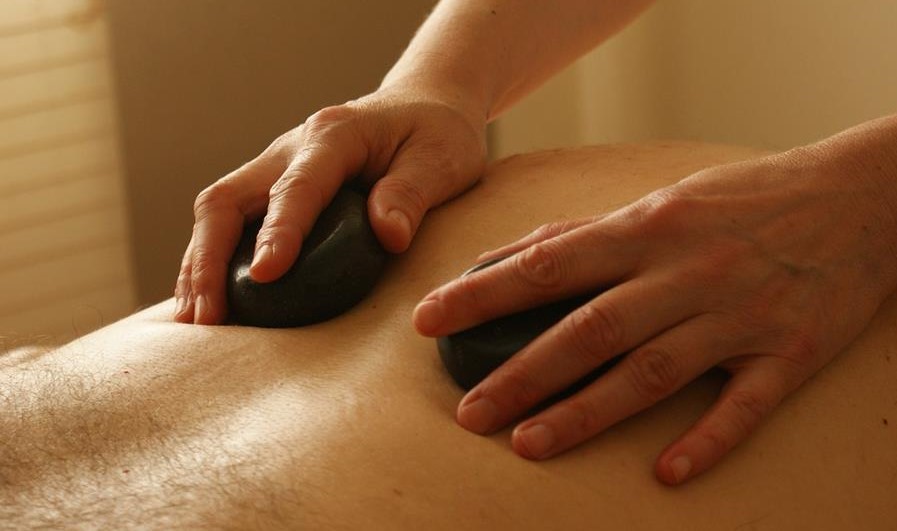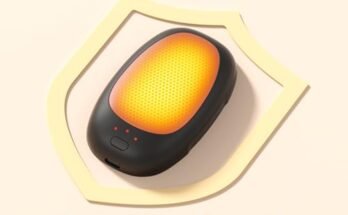Cupping therapy uses suction on the skin for health benefits, while deep tissue massage applies pressure to muscle layers. Both techniques aim to alleviate pain and improve wellness, but they differ in application and effect.
Cupping, an ancient form of alternative medicine, involves placing cups on the skin to create suction. This therapy is believed to stimulate blood flow, relieve muscle tension, and promote healing. On the other hand, deep tissue massage is a more conventional massage therapy that targets the deeper layers of muscle and connective tissue.
The therapist uses slow strokes and firm pressure to address chronic aches and pain, particularly in stiff areas such as the neck, lower back, and shoulders. Whether seeking to boost overall health or address specific discomforts, understanding the differences between these therapies can guide individuals to the most suitable treatment for their needs.
Cupping And Deep Tissue Massage: A Comparative Introduction
Exploring the world of alternative therapies brings us to two powerful techniques: cupping and deep tissue massage. Both practices aim to enhance wellness and relieve pain. Understanding their differences helps choose the best option for personal health goals. Let’s dive into the origins and fundamental techniques of each.
Origins And Popularity
Cupping has ancient roots. It started in China over 2,000 years ago. This ancient remedy later spread globally. Today, it’s widely recognized in many cultures.
Deep tissue massage, better known today, also has a rich history. It evolved from the need to ease deep muscle tension. Now, it’s a mainstream choice in spas and clinics worldwide.
Fundamental Techniques
Cupping therapy warms and places cups on the skin. This creats suction. It helps with pain, inflammation, and blood flow.
Deep tissue massage involves firm pressure. It targets deep layers of muscle and connective tissue.
| Cupping | Deep Tissue Massage |
|---|---|
| Suction-based | Pressure-based |
| Improves circulation | Resolves deep muscle tension |
| Reduces inflammation | Focus on chronic pain relief |
Breaking Down Cupping Therapy
Imagine a healing technique that uses the power of suction. Cupping therapy dates back to ancient cultures but has gained modern popularity. It’s different from deep tissue massage, yet shares a healing touch. Let’s explore how cupping stands out as a unique remedy.
The Science Behind Suction
Cupping therapy harnesses suction to improve circulation. Therapists place cups on the skin. A vacuum pulls skin upward. This action boosts blood flow, relaxes muscles and promotes cell repair. The body’s natural healing gets a significant nudge.
- Increased blood circulation
- Stimulation of tissues
- Promotion of cellular repair
Common Conditions Treated With Cupping
Cupping therapy tackles various ailments. People often turn to it for:
| Condition | Effectiveness |
|---|---|
| Chronic back pain | Relieves tension |
| Arthritis | Reduces stiffness |
| Anxiety | Calms the mind |
| Muscle soreness | Speeds up recovery |
This therapy improves overall well-being. Cupping can be a powerful ally on your wellness journey.
Delving Into Deep Tissue Massage
Delving Into Deep Tissue Massage opens up a world of relief for tired, overworked muscles. This technique explores layers beneath the surface, addressing tension points that often go untouched. Unlike other massage methods, deep tissue therapy is all about slow, deliberate strokes. It’s an exploration of muscle landscape, working through each layer until reaching the spots that crave attention the most. For those carrying chronic stress or recovering from injury, this could be the path to lasting relief.
The Art Of Applied Pressure
Deep tissue massage is a craft that balances force with finesse. Therapists use finger and elbow pressure to release tight muscle fibers. The goal is not speed but rather steadiness and precision. This technique is akin to unwinding a tightly coiled rope, slowly releasing knots to restore full functionality and range of motion. Think of each precise pressure application as a step towards overall wellness.
Targeted Ailments For Deep Tissue Therapy
- Chronic Pain: Persistent discomfort finds an adversary in deep tissue massage.
- Sports Injuries: Athletes often turn to this therapy to mend overexerted muscles.
- Stress Relief: Constant tension takes its toll; deep tissue therapy helps break the cycle.
- Posture Problems: Realigning muscles supports a healthier stance.
- Fibromyalgia: Targeted massage brings comfort to those with this condition.
By laying the groundwork to understand these treatments, an informed choice between cupping and deep tissue massage is possible. Tailoring the approach to individual needs ensures each session promotes progress on the path to wellbeing.
Experiencing The Treatments: What To Expect
Embarking on a journey to relieve muscle tension can lead you to two powerful treatments: cupping and deep tissue massage. Understanding what to expect can ease any nerves and prepare you for a rejuvenating experience. Both therapies offer unique benefits and different sensations. This section helps demystify the treatments and sets the stage for what you’ll encounter during each session.
The Cupping Sensation: Myths And Realities
Popularized by athletes and celebrities, cupping therapy has piqued the interest of many seeking pain relief and enhanced wellness. Here, discover the truth behind the treatment:
- Cupping doesn’t hurt; it creates a pulling sensation as cups are placed on the skin.
- Expect some redness or marks; these are normal and fade over time.
- It’s not just for athletes; anyone can enjoy the benefits of enhanced circulation and relaxation.
Cupping targets certain areas, removing stagnation and promoting a smooth flow of energy and blood.
Going Deep: Preparing For Intense Massage
Deep tissue massage works the inner layers of your muscles. Prepare yourself for a therapy that goes beyond surface-level tension:
- Stay hydrated before the session; this helps your muscles relax.
- Communicate with the therapist; feedback guides them to the right pressure points.
- Deep breaths help ease discomfort during intense moments.
A deep tissue massage focuses on problem areas, providing relief and helping to heal persistent aches.
Analyzing Benefits And Effectiveness
Comparing Cupping and Deep Tissue Massage uncovers unique benefits. Each offers distinctive healing approaches. Let’s delve into the effectiveness of each method.
Health Perks Of Cupping
- Boosts Blood Flow: Better circulation aids tissue nourishment.
- Reduces Inflammation: Inflammation diminishes, promoting wellness.
- Alleviates Tension: Cupping can release muscle tightness effectively.
- Facilitates Detoxification: Toxins are drawn out, refreshing the body.
- Eases Respiratory Issues: Can assist in treating asthma and coughs.
Healing Advantages Of Deep Tissue Massage
- Relieves Chronic Pain: Targets deep layers, easing lasting discomfort.
- Improves Mobility: Enhances joint function for better movement.
- Reduces Stress: Deep work encourages relaxation and reduces stress.
- Breaks Up Scar Tissue: Promotes healing and restores elasticity.
- Supports Recovery: Excellent for post-sport or injury recovery.

Credit: www.amazon.com
Choosing The Right Therapy For Your Needs
With so many ways to ease muscle pain, picking the right one can be tricky. Cupping and deep tissue massage stand out. But which fits you? Think about your own pain and talk to experts. Your perfect pick helps you feel your best.
Personal Pain Profiles And Preference
Finding relief depends on your pain. Cupping targets specific points, pulling at the skin to boost blood flow. It can leave circles on the skin. Deep tissue massage works the whole muscle, pressing deep to untangle knots. Know your pain spots and pick your spot: cupping or massage?
- Consider chronic pain: Is it all over or just in one spot?
- Think about sensitivity: Do you bruise easy or can you handle more pressure?
- Reflect on past treatment: What has helped your body before?
Consulting Professionals For Optimal Care
Talking to therapists opens doors to the best care. They tune into your body’s song, suggesting the right rhythm of cupping or massage.
| Therapy Type | Best For | Benefits |
|---|---|---|
| Cupping | Tight, specific pains | Increases circulation, eases areas of pain, promotes healing |
| Deep Tissue Massage | Deep, chronic muscle tension | Alleviates stress, reduces pain, improves movement |
Still unsure? Ask a certified therapist. They can guide you after a careful talk and a thorough look at your needs.
An Integrated Approach To Body Relief
An Integrated Approach to Body Relief seeks to address the complex needs of physical well-being by uniting various healing modalities. Rather than relying on a single treatment option, this method explores the synergy created when combining therapies such as cupping and deep tissue massage. Such an integrated strategy can lead to more profound and lasting relief for those with muscle tension, chronic pain, or stress-related discomfort.
Combining Modalities For Enhanced Results
Discovering the power of combined therapies promises remarkable outcomes. By integrating the suction technique of cupping with the kneading strokes of deep tissue massage, individuals may experience a dual approach to muscle release and healing. This combination allows the body to release toxins, improve blood flow, and ease deeply rooted tension efficiently.
- Cupping: Creates negative pressure to lift the skin and stimulate blood flow
- Deep Tissue Massage: Uses firm pressure to target deeper layers of muscle
| Treatment | Primary Benefit | Integration Advantage |
|---|---|---|
| Cupping | Detoxification | Enhanced muscle recovery |
| Deep Tissue Massage | Reduces chronic pain |
Customized Therapy Plans: Blending Cupping And Massage
A one-size-fits-all approach rarely suffices for holistic wellbeing. Personalized therapy plans, which blend cupping with massage techniques, take into account individual preferences, pain points, and treatment goals. Practitioners can adjust the suction level in cupping and the intensity of massage strokes to match the unique contours of each client’s body.
- Assessment of individual needs
- Strategic planning of treatment frequency
- Adjustable techniques for tailored experiences
Clients leave these sessions feeling not just relieved but also empowered to continue their journey towards optimal health. Embracing a customized approach to body relief ensures that every session is maximally beneficial, promoting quicker recovery and greater satisfaction.

Credit: www.amazon.com

Credit: www.facebook.com
Frequently Asked Questions For Cupping Vs Deep Tissue Massage
Is Cupping Like Deep Tissue Massage?
Cupping therapy and deep tissue massage both target muscle relaxation, but they use different techniques. Cupping uses suction to lift skin and tissues, whereas deep tissue massage applies pressure to release muscle tension.
Does Cupping Break Up Knots?
Cupping therapy can help relax muscles and may release knots by improving blood flow and relieving tension.
What Are 3 Negatives Of Cupping?
1. Cupping can cause temporary skin discoloration. 2. It may lead to minor discomfort or burns if improperly applied. 3. There’s a risk of infection if equipment isn’t sterilized correctly.
Can You Do Deep Tissue Massage And Cupping At The Same Time?
Yes, you can combine deep tissue massage with cupping, as they complement each other for muscle relaxation and improved circulation.
Conclusion
Deciding between cupping and deep tissue massage depends on your wellness goals. Cupping offers unique benefits, like improved circulation and relief from respiratory issues. Deep tissue targets chronic pain and muscle tension. Consult a therapist to identify the best option for your body’s needs.
Your path to relaxation and healing awaits!
Related Post:



